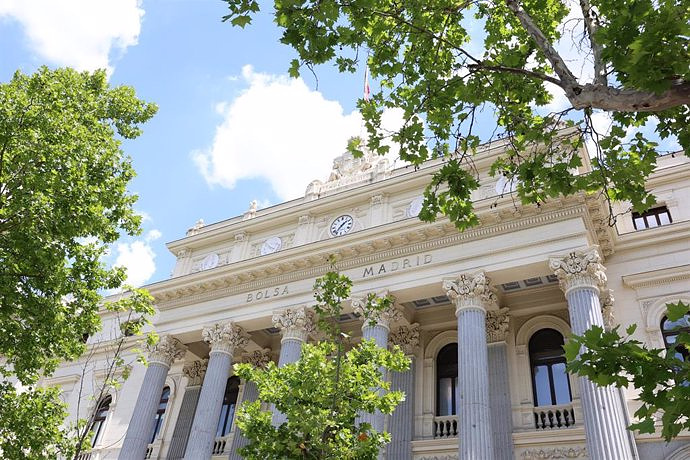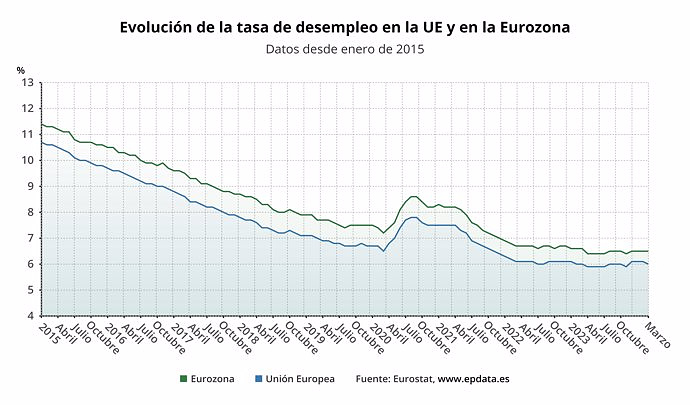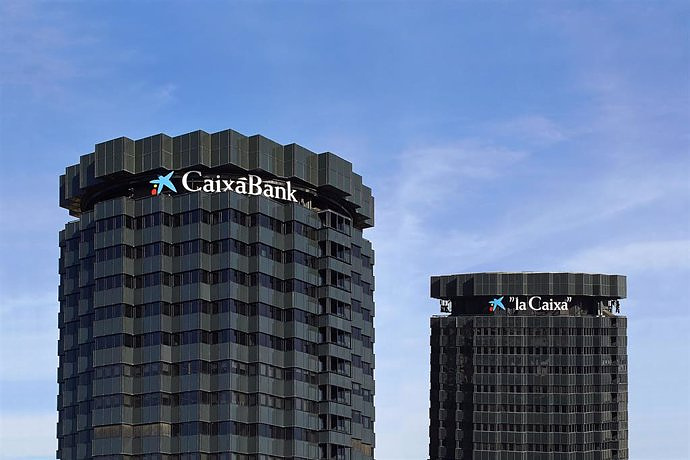MADRID, 22 Ago. (EUROPA PRESS) -
The new table of contribution brackets is presented as the main doubt of the self-employed in the next contribution system for real income for self-employed workers, which will begin to be applied from January 1, 2023, according to what they comment to Europa Press the main self-employed associations.
After months of negotiation, the Government and the social agents agreed at the end of July on the new contribution system for real income, approved in the Council of Ministers on July 26 and awaiting its passage through Congress this Thursday. The new regime establishes a table of 15 sections, with quotas that will range from 230 euros to 500 euros and will vary until 2025, depending on the net income of self-employed workers.
The Union of Professionals and Self-Employed Workers (UPTA), the Association of Self-Employed Workers (ATA), and the Union of Associations of Self-Employed Workers and Entrepreneurs (Uatae) have already begun to receive inquiries about the operation of the new system and they anticipate that with the start of the new course and the approach of the date of entry into force are increasing.
Uatae informs Europa Press that the largest number of inquiries received to date "were intended to better understand the sections of the table. "Once the information was provided, they have not had any more impact," they point out from the organization led by María José Landaburu .
And although he maintains that for the moment they have not received a notable number of doubts, he does not rule out that after the summer period new questions arise among the self-employed.
Since the approval of the decree in the Council of Ministers, ATA has observed an increase in queries by the self-employed, also regarding the new sections and the calculation of real income on which the new contribution system is based. The self-employed are concerned about what will happen if they do not calculate their real income well and how to record it, according to sources consulted by Europa Press.
For its part, UPTA foresees "a real avalanche" when the summer is over and calls on the Government to launch an information campaign.
"With 3.3 million self-employed workers, dispersed from a geographical point of view, information is very important," says the president of UPTA, Eduardo Abad, to Europa Press.
In his opinion, the new contribution system for real income requires a "very pedagogical" and "very didactic" explanation so that the self-employed can understand the changes and adapt to them.
UPTA estimates that most of the doubts will focus on the contribution brackets and on the possibility of changing the bracket every two months. For this reason, it insists on the need for the authorities to explain in more detail the change in the contribution model every two months, the regularization at the end of the fiscal year and the cessation of activity.
The new contribution system for self-employed workers based on real income will come into force on January 1, 2023 and will have a transition period of nine years, until 2032. Until then, a phase has been established that will run from 2023 to 2025, with 15 quota tranches that will range from 230 euros to 500 euros and will vary until 2025, depending on the net income of self-employed workers.
The self-employed will have the possibility of changing sections every two months, with a total of six changes per year, to adapt their contribution to the income forecasts at each time of the year and their professional activity.
In 2023, the quota for a self-employed person with net income (income minus expenses) equal to or less than the Minimum Interprofessional Salary will be 230 euros. In 2024, it will be reduced to 225 and in 2025, it will pay 200 euros.
For those with net returns of more than 1,300 euros and less than or equal to 1,500 euros, and more than 1,500 euros and less than or equal to 1,700 euros, the fee will remain at 294 euros for the three years. While in the lower yield brackets the fee also decreases between 2023 and 2025, from net yields above 1,700 euros, the fee increases throughout those three years.
Thus, a self-employed person who presents net returns above 3,620 euros and up to 4,050 euros, or equal to that amount, (tranche 13) will pay 100 euros more in installment between 2023 and 2025. In 2023, he will begin to pay 390 euros, will rise at 400 euros in 2024 and 490 in 2025.
In the last section, the fifteenth, are all the self-employed with net income of more than 6,000 euros. His quota for 2023 will be 500 euros, it will rise to 530 euros the following year and will reach 590 euros in 2025.
The additional provisions of the royal decree-law that is approved on Tuesday specify that, after those three years, the partners will have to agree on the sections for the coming years, until 2032.
The new system also attends to another of the requests of the self-employed, the deduction of expenses that are difficult to justify, among which Social Security gives the example of computers, the rental of premises or the purchase of supplies. This deduction will be 7% for the self-employed and 3% for self-employed companies.

 Exploring Cardano: Inner Workings and Advantages of this Cryptocurrency
Exploring Cardano: Inner Workings and Advantages of this Cryptocurrency Seville.- Economy.- Innova.- STSA inaugurates its new painting and sealing hangar in San Pablo, for 18 million
Seville.- Economy.- Innova.- STSA inaugurates its new painting and sealing hangar in San Pablo, for 18 million Innova.- More than 300 volunteers join the Andalucía Compromiso Digital network in one month to facilitate access to ICT
Innova.- More than 300 volunteers join the Andalucía Compromiso Digital network in one month to facilitate access to ICT Innova.-AMP.- Ayesa acquires 51% of Sadiel, which will create new technological engineering products and expand markets
Innova.-AMP.- Ayesa acquires 51% of Sadiel, which will create new technological engineering products and expand markets Khan is re-elected mayor of London and underpins Labor's victory in local elections
Khan is re-elected mayor of London and underpins Labor's victory in local elections Felipe VI swears the flag again 40 years later at the AGM with Princess Leonor as a witness
Felipe VI swears the flag again 40 years later at the AGM with Princess Leonor as a witness Freixenet and unions agree to reduce working hours by 20-50% this year due to the drought
Freixenet and unions agree to reduce working hours by 20-50% this year due to the drought STATEMENT: Nearly 400 people participate in the II Family Support Conference at UIC Barcelona
STATEMENT: Nearly 400 people participate in the II Family Support Conference at UIC Barcelona How Blockchain in being used to shape the future
How Blockchain in being used to shape the future Not just BTC and ETH: Here Are Some More Interesting Coins Worth Focusing on
Not just BTC and ETH: Here Are Some More Interesting Coins Worth Focusing on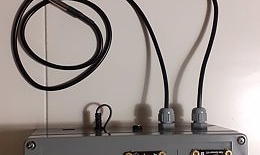 A sensor system obtains the fingerprint of essential oils and detects if they have been adulterated
A sensor system obtains the fingerprint of essential oils and detects if they have been adulterated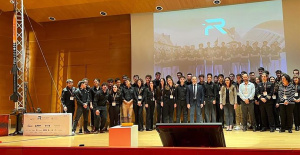 Faraday UPV presents the 'Origin' rocket to exceed 10 km of flight: "It is the beginning of the journey to space"
Faraday UPV presents the 'Origin' rocket to exceed 10 km of flight: "It is the beginning of the journey to space"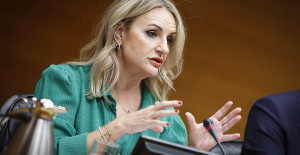 The Generalitat calls for aid worth 4 million to promote innovation projects in municipalities
The Generalitat calls for aid worth 4 million to promote innovation projects in municipalities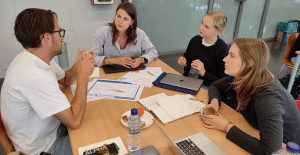 UPV students design an app that helps improve the ventilation of homes in the face of high temperatures
UPV students design an app that helps improve the ventilation of homes in the face of high temperatures A million people demonstrate in France against Macron's pension reform
A million people demonstrate in France against Macron's pension reform Russia launches several missiles against "critical infrastructure" in the city of Zaporizhia
Russia launches several missiles against "critical infrastructure" in the city of Zaporizhia A "procession" remembers the dead of the Calabria shipwreck as bodies continue to wash up on the shore
A "procession" remembers the dead of the Calabria shipwreck as bodies continue to wash up on the shore Prison sentences handed down for three prominent Hong Kong pro-democracy activists
Prison sentences handed down for three prominent Hong Kong pro-democracy activists ETH continues to leave trading platforms, Ethereum balance on exchanges lowest in 3 years
ETH continues to leave trading platforms, Ethereum balance on exchanges lowest in 3 years Investors invest $450 million in Consensys, Ethereum incubator now valued at $7 billion
Investors invest $450 million in Consensys, Ethereum incubator now valued at $7 billion Alchemy Integrates Ethereum L2 Product Starknet to Enhance Web3 Scalability at a Price 100x Lower Than L1 Fees
Alchemy Integrates Ethereum L2 Product Starknet to Enhance Web3 Scalability at a Price 100x Lower Than L1 Fees Mining Report: Bitcoin's Electricity Consumption Declines by 25% in Q1 2022
Mining Report: Bitcoin's Electricity Consumption Declines by 25% in Q1 2022 Oil-to-Bitcoin Mining Firm Crusoe Energy Systems Raised $505 Million
Oil-to-Bitcoin Mining Firm Crusoe Energy Systems Raised $505 Million Microbt reveals the latest Bitcoin mining rigs -- Machines produce up to 126 TH/s with custom 5nm chip design
Microbt reveals the latest Bitcoin mining rigs -- Machines produce up to 126 TH/s with custom 5nm chip design Bitcoin's Mining Difficulty Hits a Lifetime High, With More Than 90% of BTC Supply Issued
Bitcoin's Mining Difficulty Hits a Lifetime High, With More Than 90% of BTC Supply Issued The Biggest Movers are Near, EOS, and RUNE during Friday's Selloff
The Biggest Movers are Near, EOS, and RUNE during Friday's Selloff Global Markets Spooked by a Hawkish Fed and Covid, Stocks and Crypto Gain After Musk Buys Twitter
Global Markets Spooked by a Hawkish Fed and Covid, Stocks and Crypto Gain After Musk Buys Twitter Bitso to offset carbon emissions from the Trading Platform's ERC20, ETH, and BTC Transactions
Bitso to offset carbon emissions from the Trading Platform's ERC20, ETH, and BTC Transactions Draftkings Announces 2022 College Hoops NFT Selection for March Madness
Draftkings Announces 2022 College Hoops NFT Selection for March Madness



